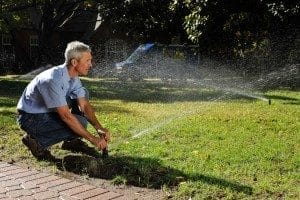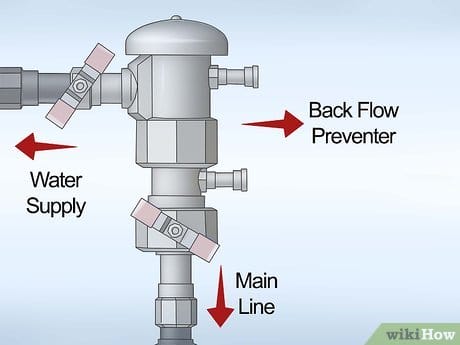The Complete Guide to Sprinkler Installation in Cedar Park
By Innovation Grounds
Maintaining a lush, green lawn in Cedar Park, Texas, can be a challenge due to the region’s hot, dry summers and varying rainfall patterns. A well-designed irrigation system can make all the difference. This is where Cedar Park sprinkler installation comes in. Whether you are a homeowner looking to enhance your landscape or a business aiming to improve curb appeal, investing in a sprinkler system can save you time, water, and money in the long run.
In this guide, we’ll cover everything you need to know about sprinkler installation in Cedar Park, from understanding the types of sprinkler systems to the installation process and maintenance tips. By the end, you’ll be equipped with the knowledge to make an informed decision about your irrigation needs.
Why Invest in Sprinkler Installation in Cedar Park?
1. Efficient Water Usage
Cedar Park’s hot, dry climate makes it essential to conserve water while keeping your lawn healthy. A properly installed sprinkler system ensures that water is distributed evenly across your yard, minimizing waste and promoting optimal growth. Modern sprinkler systems often come with features like timers and sensors that adjust watering schedules based on weather conditions, preventing overwatering or underwatering.
2. Time Savings
Watering your lawn manually can be a time-consuming task, especially when dealing with large areas. With a sprinkler system, you can set it and forget it. The system will run on an automatic schedule, saving you valuable time and effort while maintaining a consistent watering routine.
3. Increased Property Value
A well-maintained lawn with an efficient irrigation system can increase the curb appeal of your property. Whether you’re looking to sell your home in the future or simply enjoy the aesthetic of a beautiful lawn, a sprinkler system can add significant value to your property.
4. Better Lawn Health
Sprinklers help ensure that your lawn receives the right amount of water, which is crucial for promoting healthy grass growth. Overwatering and underwatering can both lead to unhealthy lawns, but an irrigation system ensures consistent, adequate watering, helping your plants thrive.

Types of Sprinkler Systems for Cedar Park
When considering Cedar Park sprinkler installation, it’s important to choose the right type of system for your property. Below are some of the most common types of sprinkler systems available:
1. In-Ground Sprinkler Systems
In-ground sprinkler systems are the most popular choice for residential and commercial properties in Cedar Park. These systems are buried underground, with sprinkler heads that pop up when activated and retract back into the ground when not in use. In-ground systems are highly efficient and offer uniform coverage across your lawn.
2. Drip Irrigation Systems
Drip irrigation systems are ideal for gardens, flower beds, or areas with delicate plants. This system delivers water directly to the roots of plants, reducing water waste and preventing runoff. Drip irrigation is especially useful for areas that require precise watering, such as vegetable gardens or flower beds.
3. Spray Systems
Spray systems are typically used for smaller lawns or specific areas that need targeted watering. These systems use spray nozzles to disperse water over a wider area. They are less efficient than drip systems but are a good choice for specific spots in your yard, such as flower beds or shrubs.
4. Soaker Hoses
Soaker hoses are a more manual option but can be effective in smaller garden areas. These hoses allow water to seep out along their length, providing slow, consistent moisture to your plants. They’re easy to install and are often used in vegetable gardens or flower beds.

The Sprinkler Installation Process in Cedar Park
Installing a sprinkler system requires careful planning and precision. Below is an overview of the typical Cedar Park sprinkler installation process:
1. Planning and Design
The first step in installing a sprinkler system is to assess your landscape and design a system that meets your needs. This involves mapping out the areas to be watered, determining the water pressure and flow requirements, and deciding on the type of sprinkler heads or emitters you’ll need. A professional installer can help design an efficient system that ensures even water distribution.
2. Obtaining Permits
In some cases, you may need to obtain a permit for sprinkler installation, especially if you are installing an in-ground system. Cedar Park’s municipal code requires homeowners to comply with local regulations regarding water usage and sprinkler systems. Check with the city’s permitting office to see if you need approval before starting the installation.
3. Digging Trenches and Installing Pipes
The next step is to dig trenches for the pipes that will carry water to each sprinkler head. Depending on the size of your yard and the complexity of the design, this may involve significant digging. The pipes are then laid in these trenches, connecting the sprinkler heads to the main water supply.
4. Installing the Sprinkler Heads
Once the pipes are in place, the sprinkler heads are installed. These heads are positioned at strategic locations around the yard to ensure even water coverage. The heads may be adjustable to control the direction and distance of the spray.
5. Connecting the System to the Water Supply
The sprinkler system is then connected to your home’s water supply, either directly to the outdoor faucet or through your irrigation line. If you’re installing an in-ground system, the connection will typically be made to the main water line.
6. Testing the System
After installation, the system is thoroughly tested to ensure everything is working correctly. The pressure, flow, and coverage of the system are checked, and any adjustments needed are made to improve efficiency. A smart timer or irrigation controller is also programmed to automate watering schedules.
7. Backfilling the Trenches
Once the system is tested and working, the trenches are backfilled with soil. The area is then leveled, and any turf or landscaping that was disturbed during the installation is restored.

Maintaining Your Sprinkler System
Sprinkler heads can become clogged with dirt, debris, or mineral buildup over time. Inspect the heads periodically and clean them as needed to ensure they are spraying properly.
2. Inspect for Leaks
Check the pipes and sprinkler heads for any signs of leaks or damage. A broken or cracked pipe can waste water and decrease the efficiency of your system.
3. Adjust Sprinkler Heads
As plants and landscaping grow, you may need to adjust the direction or height of your sprinkler heads to ensure they continue to cover the appropriate areas.
4. Winterize Your System
In colder months, it’s important to winterize your sprinkler system to prevent freezing. This involves draining any remaining water from the pipes and sprinkler heads to avoid damage from freezing temperatures.
5. Regular System Checks
Test your sprinkler system at least once a month to ensure it’s working efficiently. This will help catch any potential issues early and ensure that your lawn remains healthy and properly watered.

Conclusion
Investing in Cedar Park sprinkler installation is an excellent way to ensure that your lawn and garden receive the proper care they need while saving you time and water. Whether you opt for an in-ground system, drip irrigation, or another option, a professional installation will help your landscape thrive, even in Cedar Park’s challenging climate.
By following the proper installation steps and performing regular maintenance, you can enjoy a beautiful, healthy lawn all year long. If you’re unsure where to start, don’t hesitate to contact a local sprinkler installation expert to guide you through the process and design a system that meets your needs.


